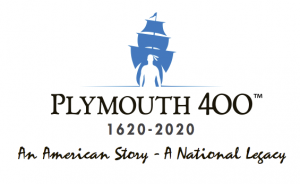Dec 1, 2016 | legislative, news
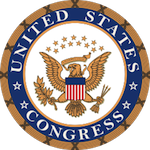 I begin every month with a review of the numismatic-related legislation that occurred in the previous month. Although congress returned to work on November 14, not much has been done. The services I subscribe to so that I can receive alerts on votes or signed legislation shows not much has been done except for a few bills that have unanimous support or asks to rename a building, park, or some other federal property in the name of a hometown hero.
I begin every month with a review of the numismatic-related legislation that occurred in the previous month. Although congress returned to work on November 14, not much has been done. The services I subscribe to so that I can receive alerts on votes or signed legislation shows not much has been done except for a few bills that have unanimous support or asks to rename a building, park, or some other federal property in the name of a hometown hero.
Given the results of the election, sources say that the partisan rancor is so fervent that even the most cordial relationships have turned icy. These feelings are not limited to cross-party relationships. There is a growing divide between ideological members in both parties that could almost split the congress into four parties. Many are predicting more gridlock ahead—as if there was not gridlock in the past.
I continue to hope that congress can see past their personal issues and do something right like pass a commemorative coin program for the 50th anniversary of Apollo 11. If you have to name the top defining events of the 20th century, Apollo 11 has to be on that list.
Nov 12, 2016 | BEP, legislative, news, policy, US Mint
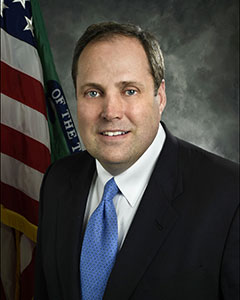
Rhett Jeppson, nominated to be the 39th Director of the U.S. Mint
The immediate impact of the election results is that Rhett Jeppson will not be confirmed to become the Director of the U.S. Mint. Even though the Senate Banking Committee held a hearing for his nomination on March 15, the chance of the GOP-led Senate confirming any of President Obama’s appointment nominations are non-existent.
Jeppson was hired in January 2015 as Principal Deputy Director. Jeppson was hired as a member of the government’s Senior Executive Service (SES) program. In July, it was announced that Jeppson would be nominated as the Director. Since the nomination will likely die in committee, Jeppson will remain on the U.S. Mint staff as a government employee. Although he has not announced his intentions, Jeppson is likely to continue as Principal Deputy Director.
It is unlikely that the next administration will nominate Jeppson or anyone in the near future. Considering that there has not been political appointee running the U.S. Mint since January 2011, maybe President Obama could use his power to convert the term appointment into a permanent government employee. This way, the U.S. Mint can be run by competent managers rather than a pol who might do something like not ordering enough planchets to maintain a major bullion program.
The Bureau of Engraving and Printing is not affected by a change in administrations because the position of the director is a permanent government employee. Len Olijar will remain Director of the BEP as long as he is a government employee in good standing.
As for any of the pending legislation, do not count on anything being passed. Given the results of the election, sources say that the partisan rancor is so fervent that even the most cordial relationships have turned icy. These feelings are not limited to cross-party relationships. There is a growing divide between ideological members in both parties that could almost split the congress into four parties.
To suggest that the partisan bickering to escalate during the lame duck session would be an understatement. Remember, congress passed a continuing resolution, not a real budget, in late September that will expire on December 9. If a budget is not passed by December 9 then the government will have to be shutdown.
The 114th congress will adjourn being one of the most ineffective congress on record.
For the 115th congress that will convene on January 3, 2017, there will be 239 Republicans and 193 Democrats with three runoffs pending (two in Louisiana). Although the Republicans lost 7 total seats, they continue to hold a majority. Currently, Rep. Jeb Hensarling (R-TX) is the Chairman of the House Committee on Financial Services. Although it is not known if Hensarling will remain as chair of this committee, it is likely the new leadership will continue the previous policies. If the attitudes of this committee do not change, there may be very few commemorative coin programs that get through this committee.
Although revenue generating bills are required to be introduced in the House of Representatives (U.S. Constitution, Article I, Section 4), the Senate has been known to introduce commemorative coin bills without argument from their House counterparts. For the 115th congress, the Senate will have 51 Republicans and 48 Democrats with a runoff in Louisiana scheduled for December 10. However, Senate rules make the composition somewhat irrelevant because of their ability to filibuster.
Under the Senate’s filibuster rules (Senate Rule XXII), a senator can inform the presiding member that they intend to filibuster the debate. At that point, the presiding member will set the bill aside to allow other business to continue because the Senate can only work on one item at a time. This means that a filibuster stops all other floor actions. By setting the bill aside and not bringing it to the floor, this allows for other senate business to continue while the leadership tries to gather support for a cloture vote.
Cloture, or closure, is the act to end the free-flow debate of the senate and apply restrictions, such as a 30 hour limit on debate. Cloture requires a three-fifths vote of the senate (60 votes) to agree on cloture. Anyone who remembers some of the past discussions on the composition of the senate, when one party controls 60 seats, they called that a “filibuster-proof majority.” Otherwise, any senator can threaten a filibuster and have that measure buried.
Although it is unlikely that the senate would filibuster the vote on a commemorative coin bill, but it would be obstructed by the another bill ahead of it in the queue.
Even though I would like for the Apollo 11 50th Anniversary Commemorative Coin Act (H.R. 2726 and S. 2957) to pass, I will not be holding my breath during the lame duck session this year or a new version introduced anytime next year.
Nov 2, 2016 | legislative, news
 I don’t know about you, but I am ready for this campaign to be over!
I don’t know about you, but I am ready for this campaign to be over!
Congress has not been in session because the members are in their states and districts either campaigning to maintain their seats or, in the case of the senate, helping their colleagues in their elections.
I have a few friends who work on Capitol Hill and they are tired of these campaigns. During a recent meet-up for dinner, that expanded by the time we reached dessert, over a dozen staffers from both sides of the aisle are now considering employment outside of Washington. Everyone agree that the work environment on Capitol Hill has turned toxic. The partisanship has caused even the most cordial relationships to become strained. And this is not limited to cross-party relationships. Differences between the chambers and the leadership are straining relationships.
Everyone expects the partisan bickering to escalate during the lame duck session and for congress to adjourn shortly after a budget is passed. I still wish they would consider something for the 50th anniversary of Apollo 11. Both S. 2957 and H.R. 2726 have been introduced by members from Florida. Maybe congress can see their way to do something right, for a change!
Otherwise, since congress was not in Washington, there were no bills introduced or acted upon.
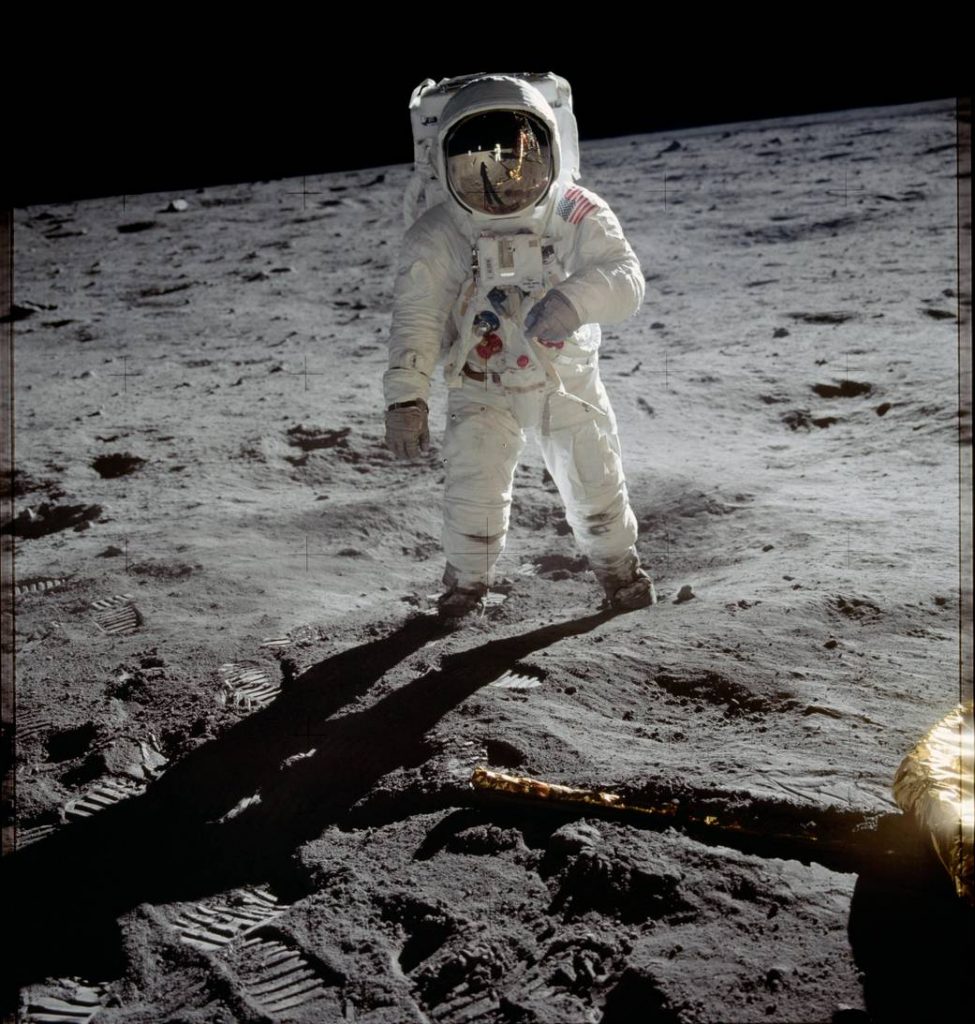
“Buzz Aldrin on the Moon” taken July 20, 1969
Oct 5, 2016 | coins, commemorative, legislative, news
 Congress returned to work right after Labor Day, not that you would have noticed. Aside from the legislation that renames most offices or other federal structures in honor of someone most of us have never hear about, congress was locked in a battle over the federal budget that was to expire on September 30. Of course, the fights were based on partisan politics. Rather than doing what is right for the nation, these hacks broke down into partisan bickering. A continuing resolution, not a real budget, was passed on September 29. They have until December 9 to fix their problems.
Congress returned to work right after Labor Day, not that you would have noticed. Aside from the legislation that renames most offices or other federal structures in honor of someone most of us have never hear about, congress was locked in a battle over the federal budget that was to expire on September 30. Of course, the fights were based on partisan politics. Rather than doing what is right for the nation, these hacks broke down into partisan bickering. A continuing resolution, not a real budget, was passed on September 29. They have until December 9 to fix their problems.
In another part of my life, I write a monthly newsletter for the Gold & Silver Political Action Committee. The PAC was started by former American Numismatic Association President Barry Stuppler to help be a voice for issues facing the numismatic and bullion industry. As part of my research into issues, I speak with staffers and other contacts on Capitol Hill to provide background information on the PAC’s issues.
This past month I used an opportunity to have a discussion about the state of congress with two lobbyists. Both are former staffers working with members on opposite sides of the aisle and have been working in the halls of congress since early in the Clinton administration. Neither were optimistic that congress would accomplish anything, even during the lame duck session after the election. With the budget battle looming and the unsettle Supreme Court nomination, neither of these professionals were optimistic.
For some of us, watching congress is a sport. While it might be as painful as watching the 1962 New York Mets or the 2003 Detroit Tigers or waiting for the Cubs to win the World Series, I will continue to report potential legislation that may affect modern collecting.
Only one bill was introduced in September:
H.R. 6025 American Innovation $1 Coin Act
Sponsor: Rep. James Himes (D-CT)
• Summary: Redesign and issuance of $1 coins honoring innovation, innovators, and pioneers from each State, the District of Columbia, and each territory.
• Introduced: September 14, 2016
• Referred to the House Financial Services Committee
This bill can be tracked at https://www.govtrack.us/congress/bills/114/hr6025.
Sep 4, 2016 | coins, commemorative, legislative
 At the beginning of each month, I review the previous month’s activity in congress looking for numismatic nuggets that we hope will bring us new coins to collect. However, congress has been on their summer vacation since mid-July, right before the conventions.
At the beginning of each month, I review the previous month’s activity in congress looking for numismatic nuggets that we hope will bring us new coins to collect. However, congress has been on their summer vacation since mid-July, right before the conventions.
There are two ways of looking at congress being away for at least seven weeks: they get how much vacation while the rest of us have to work? At least they aren’t doing anything to mess things up further.
If congress sticks to their own law of two commemorative programs per year, the next available year is 2019. Although most commemorative programs are fund raising programs, let’s have one that has some meaning. Maybe at some point, in between budget battles, congress will pass Apollo 11 50th Anniversary Commemorative Coin Act.
The Apollo space program has to be one of the greatest accomplishments this nation has made at least in the 20th century. We were challenged by President Kennedy to make it to the moon and to return the astronauts safely back to earth. And in 1969, after getting beat at every milestone into space, Apollo 11 landed on the moon and safely returned their three astronaut payload to Earth before the Soviet Union could do so.
Apollo 11 was one of the most impactful memories of my youth, especially for that year. It only rivals rushing home from school (we had to walk in those days but I think I ran that day) to watch the last out of the 1969 World Series to begin that celebration!
Sen. Bill Nelson (D-FL) introduced the bill in the Senate on May 19, 2016 (S. 2957) and Rep. Bill Posey (R-FL) introduced the same bill in the House of Representatives on June 10, 2016 (H.R. 2726). Both bills have been referred to committee.
If congress passes either of these bills, it would create the following commemorative program:
- Commemorative program issued in 2014
- Required design elements:
- Convex in shape “to more closely resemble the faceplate of the astronaut’s helmet of the time”
- “The Secretary shall hold a juried, compensated competition to determine the design of the common obverse of the coins minted under this Act, with such design being emblematic of the United States space program leading up to the first manned Moon landing.”
- Winning designer to receive no less than $5,000 for their design.
- Common reverse design “shall be a representation of a close-up of the famous ‘Buzz Aldrin on the Moon’ photograph taken July 20, 1969, showing just the visor and part of the helmet of astronaut Edwin ‘Buzz’ Aldrin, in which the visor reflects the image of the United States flag, astronaut Neil Armstrong, and the lunar lander.”
- Mintage Limit: 50,000 $5 gold; 400,000 silver dollars; 750,000 clad half-dollar; 100,000 five-ounce silver proof dollars
- Surcharges of $35 per $5 gold; $10 per silver dollar; $5 per half-dollar; and $50 per five-ounce bullion.
- Payouts: 50-percent to Smithsonian Institution’s National Air and Space Museum’s “Destination Moon” exhibit; 25-percent to the Astronauts Memorial Foundation; and 25-percent to the Astronaut Scholarship Foundation.
Considering how times have changed and we seem to have a different look on the space program, it would be wonderful to honor this achievement to remind everyone of the accomplishment.

“Buzz Aldrin on the Moon” taken July 20, 1969
Aug 8, 2016 | coin design, coins, commemorative, legislative, US Mint
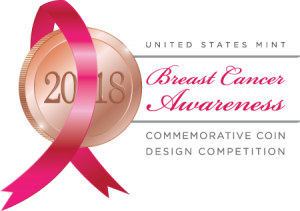 Thanks to congressional lawmaking, the U.S. Mint is holding competition for the two commemorative coin programs that will be issued in 2018. Earlier this year, the competition was opened for designs of the 2018 World War I Centennial Commemorative silver dollar. Now, the U.S. Mint has begun a competition for the 2018 Breast Cancer Awareness Commemorative Coins.
Thanks to congressional lawmaking, the U.S. Mint is holding competition for the two commemorative coin programs that will be issued in 2018. Earlier this year, the competition was opened for designs of the 2018 World War I Centennial Commemorative silver dollar. Now, the U.S. Mint has begun a competition for the 2018 Breast Cancer Awareness Commemorative Coins.
Signed into law on April 20, 2016 by President Obama (Public Law 114-148), the law requires the U.S. Mint to have an “juried competition” for a design “emblematic of the fight against breast cancer.” As part of the design, the law says that “The Secretary shall encourage three-dimensional designs to be submitted as part of the proposals.”
There is a caveat: you have to be an artist of some type and a U.S. citizen 18 years of age or older. You can read the Official Rules on the U.S. Mint website, but in summary Phase I of the competition is the evaluation of three-to-five examples of your work submitted digitally to the U.S. Mint. You have to be able to submit a digital portfolio. Even if your work is good and you think you can be part of the competition, you either have to be able to take a good picture of your work or find a photographer who can help.
An “expert” will review the submissions and select no more than 20 artists for the second phase.
In Phase II, those selected artists will be asked to submit one design along with a plaster model of both the obverse and reverse for the proposed coin that includes all of the necessary elements required of a coin. Only one artist’s design will be selected. The winning artist will receive “not less than $5,000.” If your design is selected, you will have your name etched in numismatic lore for being the designer of the coin. For this, your initials will appear on the coin, the Certificate of Authenticity, and in places like the Red Book!
Full details can be found on the U.S. Mint website.
Summary of the Breast Cancer Awareness Commemorative Coin Program
- Commemorative coins issued in 2018
- Design, emblematic of the fight against breast cancer, selected from a juried competition with no less than $5,000 going to winning design
- “The Secretary shall encourage three-dimensional designs to be submitted as part of the proposals”
- 50,000 $5 “pink gold” coins with an alloy of at least 75-percent gold with a $35 surcharge
- 400,000 one-ounce silver dollars made with not less than 90-percent silver with a $10 surcharge
- 750,000 clad half-dollar coins with a $5 surcharge
- Surcharges will be distributed to the Breast Cancer Research Foundation of New York, to further breast cancer research funded by the Foundation.
Pink gold can has been more commonly described as “rose gold.” Rose gold is an alloy of 75-percent gold with 20-percent copper and 5-percent silver. The color can be adjusted by changing the ratio of copper and silver.
Aug 1, 2016 | celebration, legislative, policy, US Mint
 As we do every month, we look back at the previous month’s activity in congress that will affect us numismatically. July started with congress on their 4th of July break coming back for a one week session before leaving to attend their respective conventions.
As we do every month, we look back at the previous month’s activity in congress that will affect us numismatically. July started with congress on their 4th of July break coming back for a one week session before leaving to attend their respective conventions.
Prior to leaving, congressed passed the United States Semiquincentennial Commission Act (Public Law 114-196). The law authorizes the formation of a commission to organize the national celebration of the 250th anniversary of the founding of the United States on July 4, 2026. It was signed by President Obama on July 22, 2016. Section 5, Paragraph (c)(2)(F) of the new law recommends that the commission encourages “Federal agencies to integrate the celebration of the Semiquincentennial into the regular activities and execution of the purpose of the agencies through such activities as the issuance of coins, medals, certificates of recognition, stamps, and the naming of vessels.”
Those of us who are old enough to remember, this was the first time in the modern era that circulating commemoratives were issued. The quarter, half-dollar, and dollar coins all had special reverse designs that were issued in 1975 and 1976. These coins remain popular amongst collectors and an interesting curiosity when non-collectors find the quarter with the drummer boy reverse in their pocket change. Although circulating commemoratives are not a new concept since the advent of the 50 State Quarters series, there is an opportunity to consider something interesting to celebrate on all U.S. coinage rather than just certain denominations.
The only other piece of legislation legislation of concern was that the Financial Services and General Government Appropriations Act of 2017 passed the House on July 7, 2016. The bill authorizes the U.S. Mint to withdraw up to $30 million from the Public Enterprise Fund for its operations. This is an increase of $10 million from when the bill was originally submitted in June.
If you missed my previous explanation on the funding of the U.S. Mint, you can read “No Taxpayer Money Is Used by the US Mint” at your leisure.
Jul 2, 2016 | coins, commemorative, legislative, US Mint
 It has been another head scratching month for us policy wonks who watch congress for more than the political theater, although both sides of the aisle provided quite a sideshow this month. With the ever eroding sense of civility, there was a few numismatic-related items that occurred. Introduced as a matched, related bills are proposals for commemoratives in 2020 and 2021:
It has been another head scratching month for us policy wonks who watch congress for more than the political theater, although both sides of the aisle provided quite a sideshow this month. With the ever eroding sense of civility, there was a few numismatic-related items that occurred. Introduced as a matched, related bills are proposals for commemoratives in 2020 and 2021:
H.R. 5598 Plymouth 400th Anniversary Commemorative Coin Act of 2016
Sponsor: Rep. William Keating (D-MA)
• Introduced: June 28, 2016
• Referred to the House Financial Services Committee
This bill can be tracked at https://www.govtrack.us/congress/bills/114/hr5598.
S. 3105 Plymouth 400th Anniversary Commemorative Coin Act of 2016
Sponsor: Sen. Edward “Ed” Markey (D-MA)
• Introduced: June 28, 2016
• Referred to the Senate Banking, Housing, and Urban Affairs Committee
This bill can be tracked at https://www.govtrack.us/congress/bills/114/s3105.
The bill calls for 100,000 $5 gold coins, 500,000 $1 silver coins, and 750,000 clad half-dollar with the usual surcharges ($35, $10, and $5 respectively), to be divided up between five related organizations surrounding the landing of the settlers at Plymouth Rock including 50-percent Plymouth 400, Inc., the organization formed by the Commonwealth of Massachusetts to manage the celebration.
Similarly, Sen. Markey and Rep, Keating are sponsoring bill (S. 3104 and H.R. 5599) “To establish the Plymouth 400th Commemoration Commission.” Not sure why this is necessary since it looks like Massachusetts’ “Plymouth 400” seems to have things covered.
Finally, the Senate Appropriations Committee reported on S. 3067, the Financial Services and General Government Appropriations Act, 2017 which will allow the U.S. Mint to withdraw up to $20 million from the U.S. Mint Public Enterprise Fund for its operations.
May 31, 2016 | coins, commemorative, legislative, policy
 When I went to graduate school for a degree in public policy, I had no idea that the basic tenants of politics would change so drastically. Watching what congress is saying, what they are doing, and the response by the media and public has been something that historians will have a good time with in the future. Today, it is difficult to keep up with policy issues that are not discussed in sound bites or come with bumper sticker-sized slogans. Thankfully, there are Internet resources for those of us to keep track of our pet issues.
When I went to graduate school for a degree in public policy, I had no idea that the basic tenants of politics would change so drastically. Watching what congress is saying, what they are doing, and the response by the media and public has been something that historians will have a good time with in the future. Today, it is difficult to keep up with policy issues that are not discussed in sound bites or come with bumper sticker-sized slogans. Thankfully, there are Internet resources for those of us to keep track of our pet issues.
On the Coin Collectors Blog we watch coin-related legislation because the U.S. Mint cannot do anything without congressional approval. My favorite site for watching legislation is Govtrack.us. Although they use the same information as Congress.gov, I like the look and feel of Govtrack.us.
Clearing the smoke and other debris, I found two pieces of numismatic-related legislation that were introduced in May:
H.R. 5168 Christa McAuliffe Commemorative Coin Act of 2016
Sponsor: Rep. Fred Upton (R-MI)
• Introduced: May 6, 2016
• Referred to the House Financial Services Committee
Summary:
- Design with image of Christa McAuliffe with reverse depicting her legacy as a teacher
- Issued in the year 2018
- Mintage Limit: 350,000 Silver dollars in uncirculated or proof
- Surcharge of $10 per coin payable to the FIRST robotics program
This bill can be tracked at https://www.govtrack.us/congress/bills/114/hr5168.
S. 2957 Apollo 11 50th Anniversary Commemorative Coin Act
Sponsor: Sen. Bill Nelson (D-FL)
• Introduced: May 19, 2016
• Referred to the Senate Banking, Housing and Urban Affairs Committee
Summary:
This bill can be tracked at https://www.govtrack.us/congress/bills/114/s2957.
May 4, 2016 | coins, commemorative, legislative
 Sen. Bob Casey (D-PA) introduced the United States Semiquincentennial Commission Act of 2016 (S. 2815). This bill is the same as H.R. 4875 introduced in the House by Rep. Patrick Meehan (R-PA) in March. Both bills seek to create a commission to celebrate the nation’s 250th birthday in 2026 similar to the bicentennial celebration of 1976. See last month’s legislative report for more information. It is common for bills like this to be introduced in both chambers hoping one will be passed.
Sen. Bob Casey (D-PA) introduced the United States Semiquincentennial Commission Act of 2016 (S. 2815). This bill is the same as H.R. 4875 introduced in the House by Rep. Patrick Meehan (R-PA) in March. Both bills seek to create a commission to celebrate the nation’s 250th birthday in 2026 similar to the bicentennial celebration of 1976. See last month’s legislative report for more information. It is common for bills like this to be introduced in both chambers hoping one will be passed.
H.R. 4875 can be found at https://www.govtrack.us/congress/bills/114/hr4875.
S. 2815 can be found at https://www.govtrack.us/congress/bills/114/s2815.
S. 2890: A bill to require the Secretary of the Treasury to mint coins in recognition of Christa McAuliffe
Sponsor: Sen. Kelly Ayotte (R-NH)
• Introduced: April 28, 2016
• Referred to the Senate Committee on Banking, Housing, and Urban Affairs
This bill can be tracked at https://www.govtrack.us/congress/bills/114/s2890.
H.R. 2722: Breast Cancer Awareness Commemorative Coin Act
Sponsor: Rep. Carolyn Maloney (D-NY)
• Introduced on June 10, 2015
• Passed the House on June 15, 2015
• Passed the Senate on April 20, 2016
• Signed by the President on April 29, 2016
Read the about the new law at https://www.govtrack.us/congress/bills/114/hr2722.
Summary of the Breast Cancer Awareness Commemorative Coin Act
- Commemorative coins issued in 2018
- Design, emblematic of the fight against breast cancer, selected from a juried competition with no less than $5,000 going to winning design
- “The Secretary shall encourage three-dimensional designs to be submitted as part of the proposals”
- 50,000 $5 “pink gold” coins with an alloy of at least 75-percent gold with a $35 surcharge
- 400,000 one-ounce silver dollars made with not less than 90-percent silver with a $10 surcharge
- 750,000 clad half-dollar coins with a $5 surcharge
- Surcharges will be distributed to the Breast Cancer Research Foundation of New York, to further breast cancer research funded by the Foundation.

iPhone 6S in Rose Gold
iPhone image courtesy of
Apple.
 I begin every month with a review of the numismatic-related legislation that occurred in the previous month. Although congress returned to work on November 14, not much has been done. The services I subscribe to so that I can receive alerts on votes or signed legislation shows not much has been done except for a few bills that have unanimous support or asks to rename a building, park, or some other federal property in the name of a hometown hero.
I begin every month with a review of the numismatic-related legislation that occurred in the previous month. Although congress returned to work on November 14, not much has been done. The services I subscribe to so that I can receive alerts on votes or signed legislation shows not much has been done except for a few bills that have unanimous support or asks to rename a building, park, or some other federal property in the name of a hometown hero.

